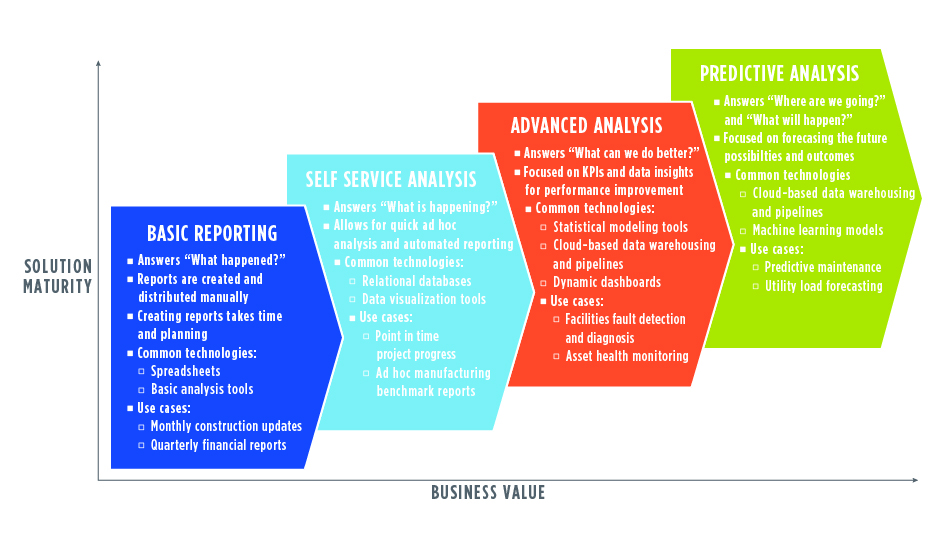A successful BI strategy requires in-depth knowledge of industry and business requirements, coupled with the leading technology solutions. Arming yourself with this information — and an understanding of where your organization is on its data journey — allows you to move forward.
BI strategy road map
Becoming a data-driven organization is not an overnight process. Having a well-defined road map that captures the vision and needs of your organization is critical. BI strategy should articulate business needs and determine technical requirements while considering current and desired future state workflows to create an actionable road map that will guide your organization through the process.
Data management and governance
Reliable insights start with high-quality data. Maintaining data quality requires a well-rounded data management process that includes standards and metrics for tracking metadata quality and monitoring user roles and access. Regular quality assurance checks are also necessary for cleaning and transforming data.
Reporting and data visualization
Automated reporting and self-service ad hoc analysis gets data into the hands of stakeholders quickly and efficiently. Predefined key performance indicators and metrics paired with robust statistical analysis help to sort the data and provide you with the insights you need on a regular basis. To enhance the value of the analysis performed, these findings need to be presented in a manner that tells the story behind the data. Tailor-made dashboards offer a cockpit view to end users, giving them a customized look at the data that is important to them.
Data science and machine learning
Data science and machine learning allow for exploratory data analysis, helping you solve complex problems and maximize the value of the data being collected. Data scientists will work with you to implement and tune machine learning models to your data or create custom algorithms based on your needs. Implementation possibilities range from simple cluster analysis to predictive asset maintenance or utility load forecasting.
Cloud services
Leveraging cloud technology streamlines your BI strategy by gathering, analyzing and presenting data through a unified platform. Cloud storage options, such as data warehousing and data lakes, break down silos and provide enterprisewide access to key information. Combined with increased computing resources, analysis becomes more efficient and insights are found faster. From building a full cloud-based BI solution to migrating your data to the cloud, an experienced partner can provide you with the level of domain knowledge required.








